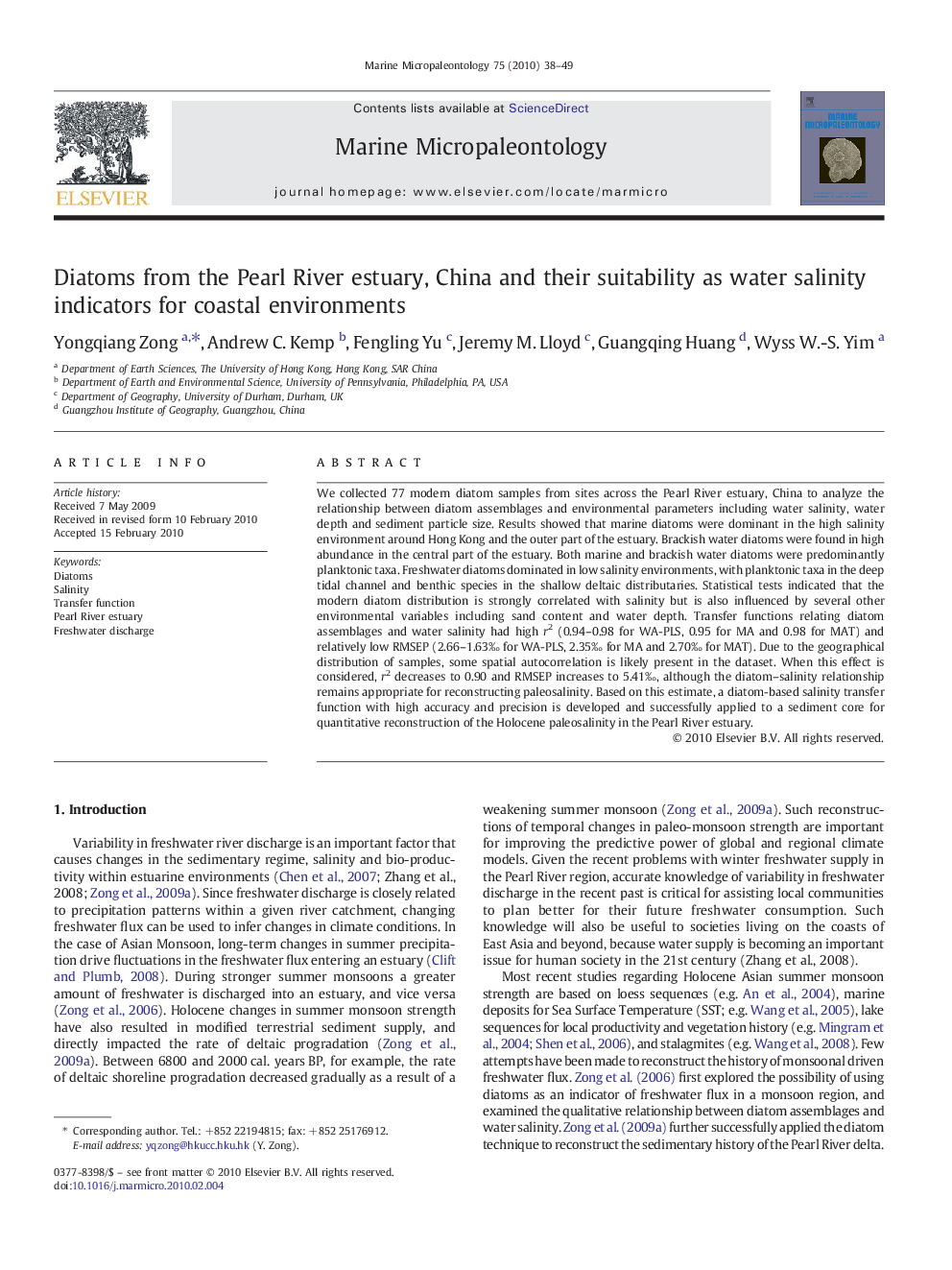| Article ID | Journal | Published Year | Pages | File Type |
|---|---|---|---|---|
| 4749214 | Marine Micropaleontology | 2010 | 12 Pages |
We collected 77 modern diatom samples from sites across the Pearl River estuary, China to analyze the relationship between diatom assemblages and environmental parameters including water salinity, water depth and sediment particle size. Results showed that marine diatoms were dominant in the high salinity environment around Hong Kong and the outer part of the estuary. Brackish water diatoms were found in high abundance in the central part of the estuary. Both marine and brackish water diatoms were predominantly planktonic taxa. Freshwater diatoms dominated in low salinity environments, with planktonic taxa in the deep tidal channel and benthic species in the shallow deltaic distributaries. Statistical tests indicated that the modern diatom distribution is strongly correlated with salinity but is also influenced by several other environmental variables including sand content and water depth. Transfer functions relating diatom assemblages and water salinity had high r2 (0.94–0.98 for WA-PLS, 0.95 for MA and 0.98 for MAT) and relatively low RMSEP (2.66–1.63‰ for WA-PLS, 2.35‰ for MA and 2.70‰ for MAT). Due to the geographical distribution of samples, some spatial autocorrelation is likely present in the dataset. When this effect is considered, r2 decreases to 0.90 and RMSEP increases to 5.41‰, although the diatom–salinity relationship remains appropriate for reconstructing paleosalinity. Based on this estimate, a diatom-based salinity transfer function with high accuracy and precision is developed and successfully applied to a sediment core for quantitative reconstruction of the Holocene paleosalinity in the Pearl River estuary.
